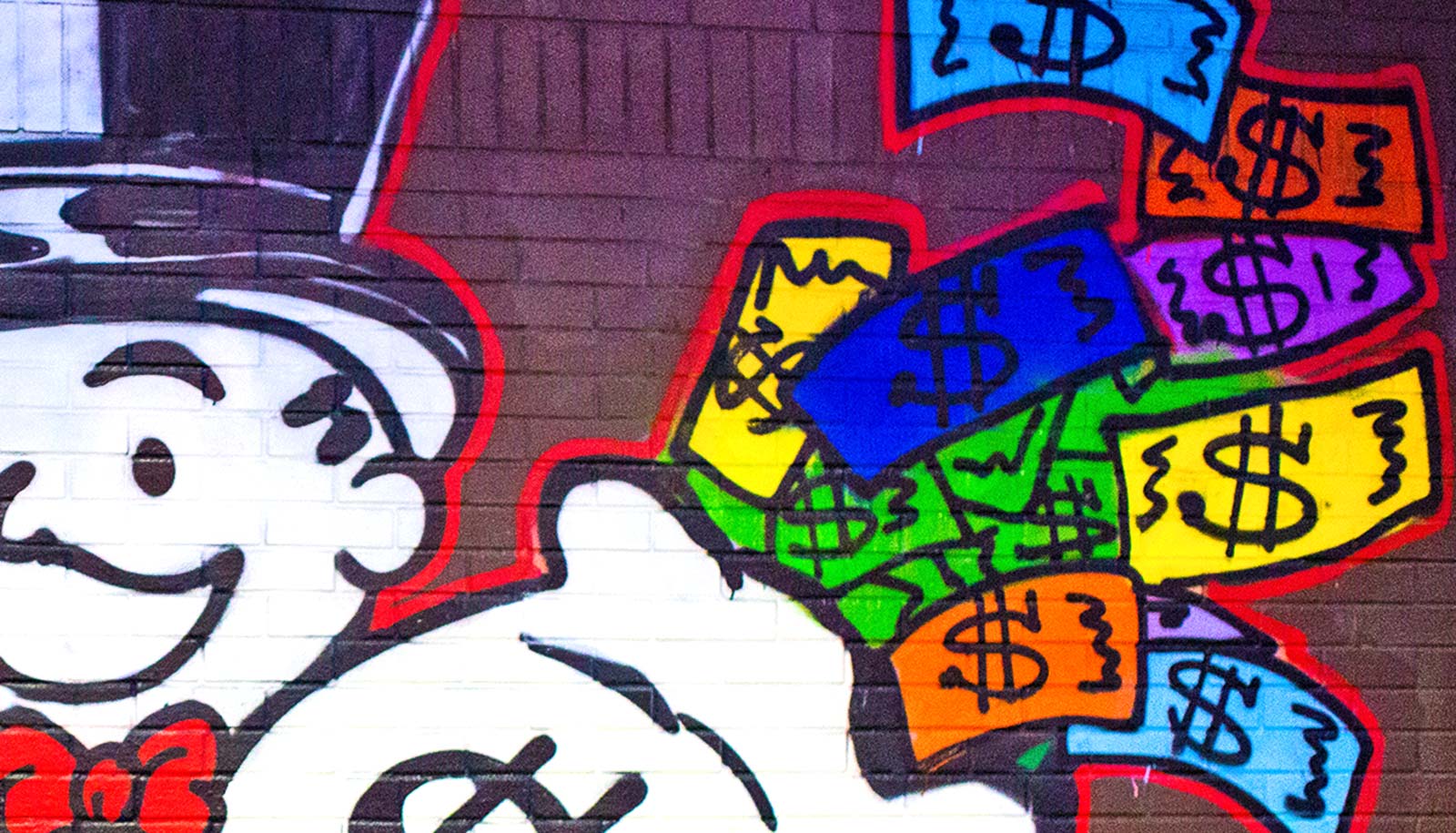Focusing on the annual rate of change, rather than month-to-month inflation changes, distorts the economic reality and makes a bad situation look worse, says economist John Horn.
That’s a problem because we may convince ourselves that the price level will continue to increase.
The monthly news headlines are certainly alarming: “US inflation hit 40-year high in June,” “US inflation eased slightly to 8.5% in July.” To the casual observer, it may seem like prices are going to continue to climb for the foreseeable future.
To be certain, inflation is a serious problem and has been for more than a year. “Prices are higher than they were pre-pandemic and that has put pressure on consumers’ pocketbooks and ability to afford the things they need to live a comfortable and productive life, especially since wage increases have not kept up at the same pace as inflation increases,” says Horn, professor of practice in economics at Washington University in St. Louis’ Olin Business School.
“High inflation could become a self-fulfilling prophecy that would require a deep recession to shake off, which would definitely not be a good outcome for those struggling to make ends meet,” Horn says.
To better understand the math of inflation, Horn offers the following explanation.
How is inflation calculated?
“The government statisticians select a bundle of goods that represent a ‘typical’ basket of goods consumers buy in a given month. This bundle is periodically updated but is kept constant from month to month. The analysts then determine the price for each of the items in the bundle and sum across all the items to determine a total expenditure for buying the entire basket. This is called the current price index. They then compare this current price index to the total expenditure for buying the bundle at a fixed point in time in the past (the base year index value) to determine how much prices have increased in the intervening period,” Horn says.
“The percentage change in inflation is calculated by taking the price index today, subtracting the price index in the previous time period of interest, and then dividing by the previous price index. That’s the basic formula for a percentage change: (current value – prior value)/prior value.
“So far, pretty straightforward. Let’s look at the current CPI (consumer price index) numbers. In July 2022, the index was 296.276. In June 2022, the index was 296.311, and in July 2021, the index was 273.003. Let’s calculate the annual inflation rate. That’s today’s index (296.276) minus last July’s index (273.003) divided by last year’s index (273.003). The result is 8.5%, which is the number the Bureau of Labor Statistics released a couple of weeks ago.
“The monthly inflation rate—or change in prices from June 2022 to July 2022—was 0.0%. We get this by taking July’s index (296.276) minus June 2022’s index (296.311) and dividing by June’s index (296.311). When rounded up to one decimal place, the answer is 0.0%. It’s actually very slightly negative, but this goes away with the rounding,” Horn says.
So, we’re comparing apples and oranges?
“It is pretty bad that inflation was 8.5% over the last year, and it sounds like prices keep increasing by almost 10%. But what if the prices stayed constant? What if the economy ‘fixed’ itself and prices were flat—staying at 296.276—for the next 12 months? Prices would be higher than they were 12 months ago, but they would stop increasing. If that happened, most consumers would still wish for the prices from three years ago, but at least they wouldn’t be increasing,” Horn says.
“Here’s where the math gets interesting. If prices stay flat for the next 12 months, then here is the annual inflation rate for every month:
![]()
“Inflation won’t go back to a ‘normal’ 2% until May of next year. Remember, that’s if prices stay flat for every month, so the month-on-month inflation rate is 0%.
“The reason this happens is that we’re comparing today’s index to a price from a year ago. For the past year, prices have been increasing really fast. The CPI index hit 250 in April 2018. It got to 260 in September 2020, two and a half years later. It reached 270 in June 2021, or nine months later. It ballooned to 280 in six months (January 2022) and four months later was at 290. That means prices have increased 5.4% since January.
“If prices stay flat, inflation next January will still reflect that 5.4% increase over the entire year. Again, that feels like really high inflation, when in fact prices will have been flat for six months—hypothetically.
“Annual inflation numbers can adjust quickly on the way up, but they will take time to come back down because of the lag in calculating inflation. It takes a long time for the 12-month lag in prices to catch up to today’s higher prices and get inflation back down to the 2% range we expect.
“The Personal Consumption Expenditures (PCE), which the Federal Reserve uses to measure inflation, is calculated a bit differently than the CPI, but it also shows the same ‘math’ persistence. If prices stay the same in the PCE metric, then we’ll be back at 2% inflation next March,” Horn says.
What if prices fell, would that correct inflation faster?
“The easy answer might seem to have prices fall in the next three months to get the CPI index back to the 275 level we saw at the end of last year. That would move the annual CPI back toward the 2% range faster, but that would also risk kicking off deflation, which can be as bad or worse than high inflation.
“If prices fell by 7 or 8%, then many consumers would think, ‘That’s great, but prices are still well above what they were before the pandemic, and they’ve been dropping quickly, so I’m going to hold off buying until prices drop a bit more.’ That reduction in consumption will lower demand, which will in fact lower prices further. But that will encourage even more consumers to hold off on purchasing, which will decrease prices further. It becomes a self-reinforcing cycle that has the effect of pushing the economy into a recession—exactly what the Fed is trying to avoid,” Horn says.
If prices can’t fall quickly, and we’re stuck with the ‘math,’ what should we do?
“One thing would be to focus more on the month-to-month trends, at least in the next few months,” Horn says. “If CPI holds flat or slightly negative through the fall, that’s a good indication that prices are stabilizing. They’ll still be well above their levels from two to three years ago, but we’ll avoid the deflationary spiral.
“Month-to-month inflation rates are typically noisy, so they are not a good metric for longer-term planning by the Fed during periods of stable inflation. But in times of crisis, they can provide a better measure of the current movement in the economy.
“The other benefit of focusing on the month-to-month is the messaging it provides to consumers and producers in the economy. Continuing to focus on the annual numbers will result in another six months of ‘historically high’ inflation. The messaging that the annual rate is decreasing will get lost in the headline attention-grabbing ‘Inflation still at near record levels.’ This increases the risk that consumers and producers develop an entrenched mindset that high inflation is here to stay.”



